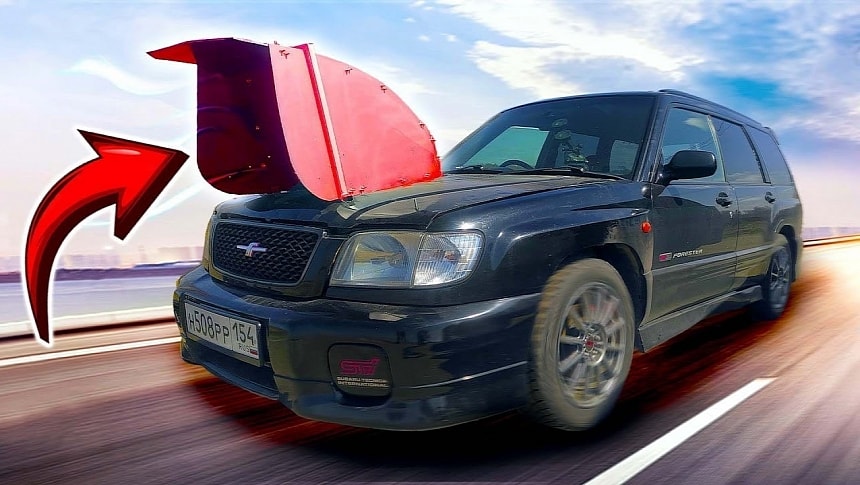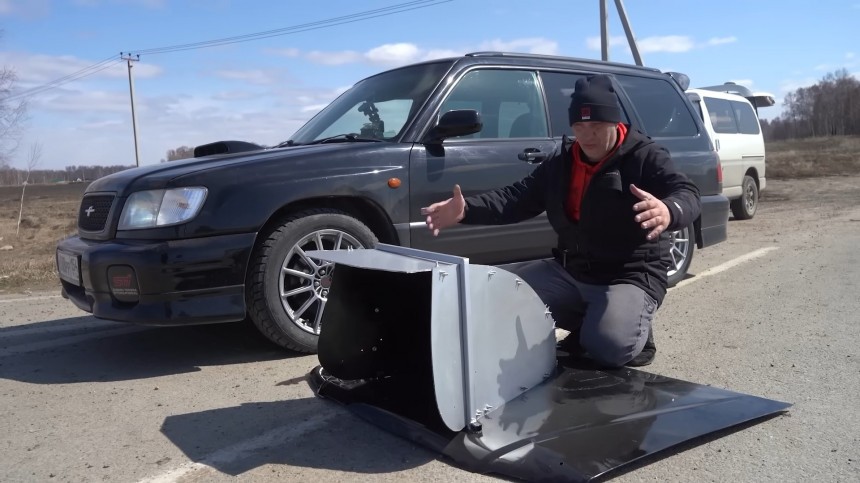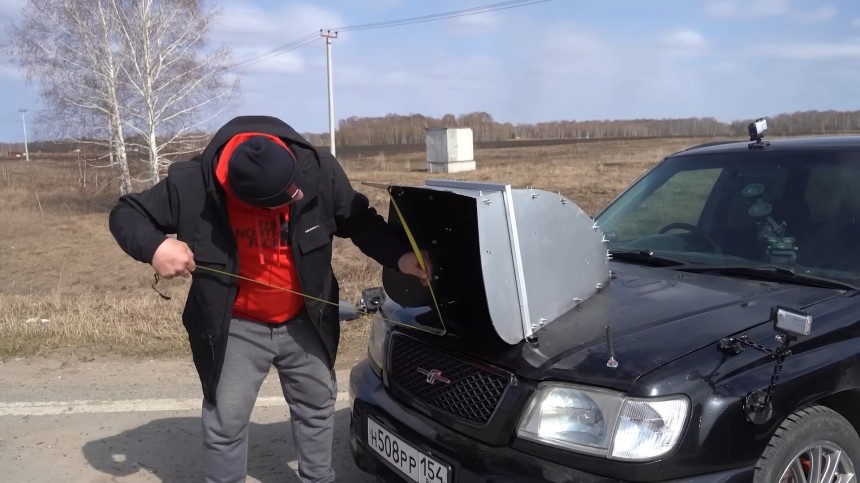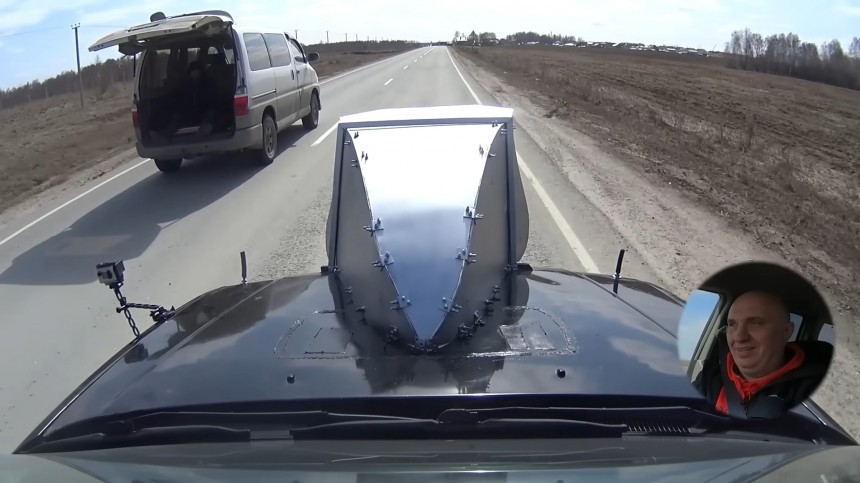Forced induction is not new for internal combustion engines—it’s been around since the 1880s, believe it or not—and has served its purpose better and better over the years. There are two factions of this technology: mechanical and exhaust-gas-driven compressors that increase intake air pressure. The result is heaps of power compared to a naturally aspirated architecture that can only rely on free-flowing air to keep the fire burning.
Less oxygen means less horsepower, something easily visible at high altitudes when air density decreases and cars with aspirated induction experience significant drops in performance. Sure, engineers have tried to tackle this natural challenge in various ways, with ram air intakes being one of them. Effectively, a large opening in the front section of a car that gulps more cubic feet per minute than regular inlet ducts, the ram air intake is very useful up to a point, and it can indeed boost performance slightly.
The chronology of internal combustion follows the following sequence: naturally aspirated engines were first, then superchargers followed, and finally, turbos made landfall. So, what would happen if the turbo assembly were to be swapped with ram air induction? This is the great automotive engineering question that no one bothered asking—or answering—until now. Enter Garage 54.
The piston wranglers from Novosibirsk, Siberia, have bought a Subaru Forester automobile specifically to test what effect results from removing a turbocharger and its ancillaries and putting on a hood scoop. In the well-established house tradition of Garage 54, there has to be (at least) one aspect that’s not exactly following the mainstream thought processes of widespread mechanical engineering.
The Russians got the ‘lose the turbo’ part right—they removed the stock hood and the intercooler and shunted the turbine and compressor (temporarily inoperable). They also fabricated a ram air scoop with a hood underneath. I know, typically, it’s the hood that features the intake, but in this instance, it simply cannot be worded like that.
Play the video below, scroll through the gallery, or both, and tell me I’m wrong. If you look closely, you’ll notice a hood under that hangar door-sized inlet sitting obscenely over the Subaru's front clip. The logic behind the air-scooping overkill is that the more air gets in the engine, the better it will perform.
In stock form, with its turbo assembly fully working under the factory hood, the Forester scores a pretty decent 4.2-second result in the zero-to-sixty sprint. However, the Russians want to see the full effect of their contraption, so the benchmark is the 0-100 time. Before we go any further, note that it is kilometers, not miles per hour, and the old Subaru Forester got to 62 mph (100 kph) in 8.6 seconds.
Now, let me tip the hat to Japanese engineers and whoever owned this particular Subaru Forester. The car's official specs claimed a 0-100 kph (62 mph) time of 8.4 seconds – 27 years ago when the two-liter turbo inline-four model was launched. The first generation of the Forester carried on until 2000, so it’s safe to assume that the Russians’ test bed is around a quarter of a century young.
Losing just two-tenths of a second in the acceleration test is a testament to mechanical prowess and good ownership. The output of the 2.0-liter inline-four turbocharged motor was rated at 168 hp and 177 lb-ft (170 PS, 240 Nm). In this Garge 54-altered instance, not even the Piston Almighty knows how much power is left.
Back to the Russians: after the initial yardstick run, the Siberians dismantled the car and had a go with their makeshift ram air hood. If we were to believe science – and we have many reasons to do so thus far – the bigger the opening, the faster the car should go. Well, Garage 54 made sure they’d get all the air in the combustion chamber – the inlet is big enough to put a proud smile on a fighter jet’s nosecone.
But that’s not all there is to this experiment – put a big air duct and go fast. Since the engine is tuned to work with a turbocharger, swapping the compressor with a breeze-trapping opening simply won’t cut it. 36.9 seconds is the adjusted 0-62 mph time; that’s over four times as slow as the stock setup. The 650x500-mm air grabber is catastrophically inefficient in this situation, but it is also fitted with an adjustable cover that can be raised to allow even more air in.
The improvement is immediate – the tuned Forester is over four seconds faster (32.5 seconds) than in the previous run. Not at all happy with the better-performing version, the mechanics change the piping design for the air intake, and their efforts pay off with dividends. After several test runs, the car scores a 27-second zero-to-sixty-two. That’s eleven seconds under the first try and around three times under the factory setup result.
Also, setting aside all combustion-related details, the barndoor on the hood is one heck of an aerodynamics deterrent, given its 25x20-inch frontal area. The Subaru is trying hard to find its pace, but the naturally aspirated de-turbo powerplant runs out of breath quicker than one can say ‘there’s no replacement for compressed-air induction.’
The chronology of internal combustion follows the following sequence: naturally aspirated engines were first, then superchargers followed, and finally, turbos made landfall. So, what would happen if the turbo assembly were to be swapped with ram air induction? This is the great automotive engineering question that no one bothered asking—or answering—until now. Enter Garage 54.
The piston wranglers from Novosibirsk, Siberia, have bought a Subaru Forester automobile specifically to test what effect results from removing a turbocharger and its ancillaries and putting on a hood scoop. In the well-established house tradition of Garage 54, there has to be (at least) one aspect that’s not exactly following the mainstream thought processes of widespread mechanical engineering.
Play the video below, scroll through the gallery, or both, and tell me I’m wrong. If you look closely, you’ll notice a hood under that hangar door-sized inlet sitting obscenely over the Subaru's front clip. The logic behind the air-scooping overkill is that the more air gets in the engine, the better it will perform.
In stock form, with its turbo assembly fully working under the factory hood, the Forester scores a pretty decent 4.2-second result in the zero-to-sixty sprint. However, the Russians want to see the full effect of their contraption, so the benchmark is the 0-100 time. Before we go any further, note that it is kilometers, not miles per hour, and the old Subaru Forester got to 62 mph (100 kph) in 8.6 seconds.
Losing just two-tenths of a second in the acceleration test is a testament to mechanical prowess and good ownership. The output of the 2.0-liter inline-four turbocharged motor was rated at 168 hp and 177 lb-ft (170 PS, 240 Nm). In this Garge 54-altered instance, not even the Piston Almighty knows how much power is left.
Back to the Russians: after the initial yardstick run, the Siberians dismantled the car and had a go with their makeshift ram air hood. If we were to believe science – and we have many reasons to do so thus far – the bigger the opening, the faster the car should go. Well, Garage 54 made sure they’d get all the air in the combustion chamber – the inlet is big enough to put a proud smile on a fighter jet’s nosecone.
The improvement is immediate – the tuned Forester is over four seconds faster (32.5 seconds) than in the previous run. Not at all happy with the better-performing version, the mechanics change the piping design for the air intake, and their efforts pay off with dividends. After several test runs, the car scores a 27-second zero-to-sixty-two. That’s eleven seconds under the first try and around three times under the factory setup result.
Also, setting aside all combustion-related details, the barndoor on the hood is one heck of an aerodynamics deterrent, given its 25x20-inch frontal area. The Subaru is trying hard to find its pace, but the naturally aspirated de-turbo powerplant runs out of breath quicker than one can say ‘there’s no replacement for compressed-air induction.’



























